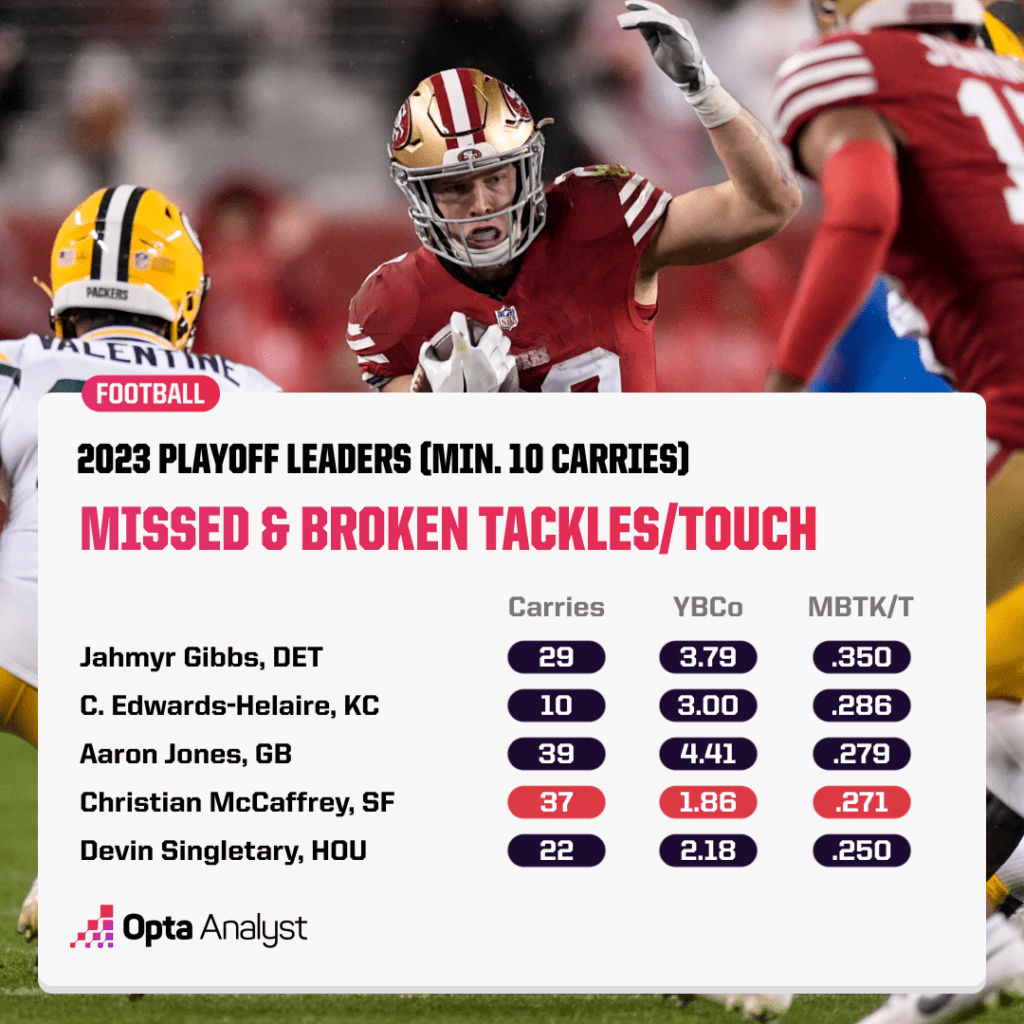Under general manager John Lynch and coach Kyle Shanahan, the San Francisco 49ers have made a living seeing value where others did not.
The Niners landed quarterback Brock Purdy with the last pick in the 2022 NFL Draft – a pretty relevant gem, you might say.
At other turns, Lynch and Shanahan got potential Hall of Fame tight end George Kittle in the fifth round; linebackers Fred Warner and Dre Greenlaw in the third and fifth, respectively; and nickel cornerback Deommodore Lenoir in the fifth.
Additionally, the Niners signed fullback Kyle Jusczyk in free agency with an ideal offensive role in mind, and traded for left tackle Trent Williams – one of the best to ever play his position – when other teams balked at the contract that would be needed to keep him long term.
The biggest exception to this roster-building approach is running back Christian McCaffrey, who arguably was the NFL’s best at the position when San Francisco traded for him during the 2022 season. Lynch and Shanahan went against conventional wisdom that treats running backs as interchangeable pieces of modern rosters, and they gave the Carolina Panthers four draft picks (one from each round between the second and fifth over two years) to land him.
The 49ers also assumed the second-biggest tailback contract in the NFL, which will cost them $14 million in cap hits each of the next two years.
It was gutsy – and it worked, as McCaffrey has been a crucial part of an elite offense that has the NFC champions set to take on the Kansas City Chiefs in Super Bowl LVIII on Feb. 11 in Las Vegas.
Why is McCaffrey is different than most running backs? His physical talent is obvious to anyone who watches him play, but his production is a little bit nature and a little bit nurture.
Our data helps explain how McCaffrey, also affectionately known as CMC, and the 49ers have enriched each other, and how the seventh-year NFL player out of Stanford has given the offense great production in circumstances both favorable and challenging.
It’s Not Just Purdy, McCaffrey Also Gets a Lot of Help From the Niners
Which San Francisco 49ers player gets the biggest benefit from being on a stacked offense with stars all around him?
The obvious answer is Purdy, who so often has an astonishing number of open receivers and time to throw the ball. But McCaffrey also has made a nice living this season by running behind a strong run-blocking offensive line, led by Williams.
McCaffrey’s average 3.1 yards before contact are the most among starting running backs in the NFL and fourth overall among backs with at least 50 regular-season carries. Some of that figure is attributable to CMC’s abilities to make guys miss and get downhill quickly, but some of it is just that the O-line gets a lot of forward push.
Despite McCaffrey being a threat and defenses knowing it, his bad-box percentage – the rate at which he faces eight or more defenders in the box when lined up in the backfield – is almost exactly league average at 46.1%. With Kittle, Deebo Samuel and Brandon Aiyuk attracting attention down the field, defenses only have so much appetite for stacking bodies near the line of scrimmage.
Plus, McCaffrey helps his own cause by being incredibly slippery.
It’s not like McCaffrey has infinite room to run all the time. In fact, in the 49ers’ two playoff wins to date against the Green Bay Packers in the divisional round and Detroit Lions in the NFC championship game, he’s had to contend with frequent defenders invading his personal space.
McCaffrey has averaged only 1.9 yards before contact on his 37 postseason carries – one of the lower marks this postseason – but he’s still managed a sparkling 5.1 yards per carry overall, which ranks No. 2 among players with 10+ carries.
Also in the playoffs, McCaffrey ranks fourth in missed and broken tackles per touch (.271). He’s managed 128 (Packers) and 132 (Lions) scrimmage yards even as he’s had to contend with frequent visitors to the backfield.
That his playoff numbers are generally better than his regular-season numbers despite this context is a testament to how McCaffrey has raised his level of play at critical moments.

It’s also interesting heading into the Super Bowl matchup with the Chiefs, as the AFC champions ranked fourth in the NFL in success rate against the pass (35.8%) during the regular season, but were below the league average against the run (36.8%).
If McCaffrey gets more room, could he really take off?
Few Running Backs Are as Valuable as Receivers. McCaffrey is.
While he’s a featured running back, the receiving game has become a crucial part of McCaffrey’s repertoire. And an efficient one at that, in a way that’s uncommon for non-wide receivers.
He’s a prodigious route runner. Just nine NFL running backs had 70-plus receiving targets during the regular season, and that group averaged a 44.9% burn rate against the defenders covering them (predominantly linebackers).
McCaffrey led the group at 56.6%, shaking off coverage with startling ease, and was No. 1 in burn yards per target (7.8) and big play rate (17.8%) on his touches.
The undeniable picture of McCaffrey and the 49ers is they’re perfect complements to one another. The star running back is so hard to cover and tackle that he can take maximal advantage of what is usually strong run-blocking in front of him.
But he’s so elite that when that kind of escort isn’t available, his numbers do not automatically dip. Just ask the Packers and Lions, who likely felt they did a good job getting defenders to McCaffrey only to see him effective from scrimmage as the Niners advanced to Super Bowl LVIII.
There are no perfect tailbacks in the world, but Christian McCaffrey in the San Francisco 49ers offense is as close as it gets.
Check out our MLB and NBA coverage, and our NFL picks and college basketball predictions. Follow us on X and Instagram for more!
